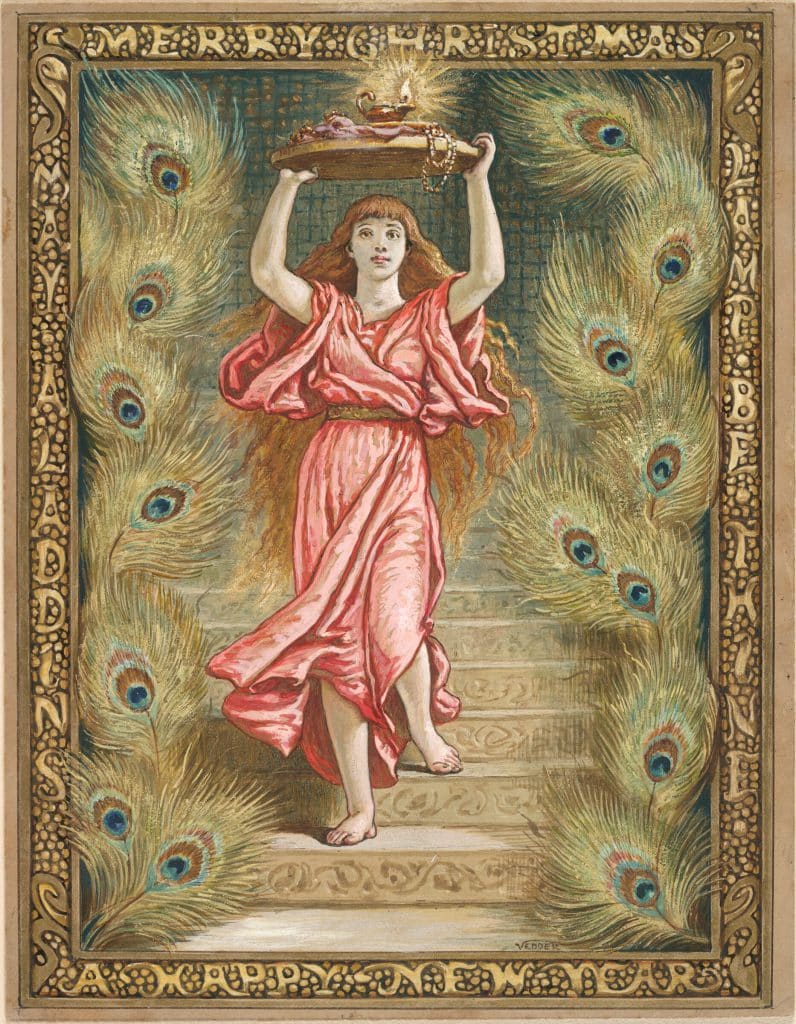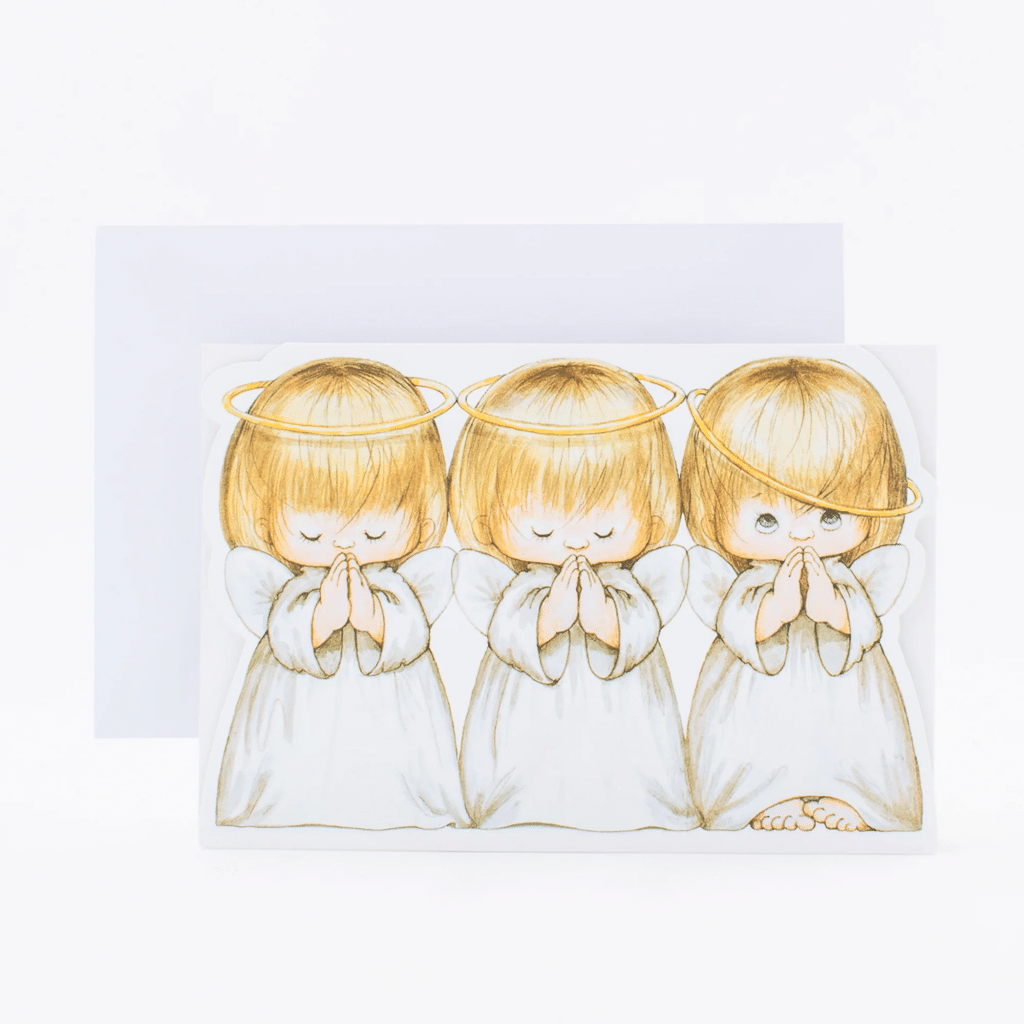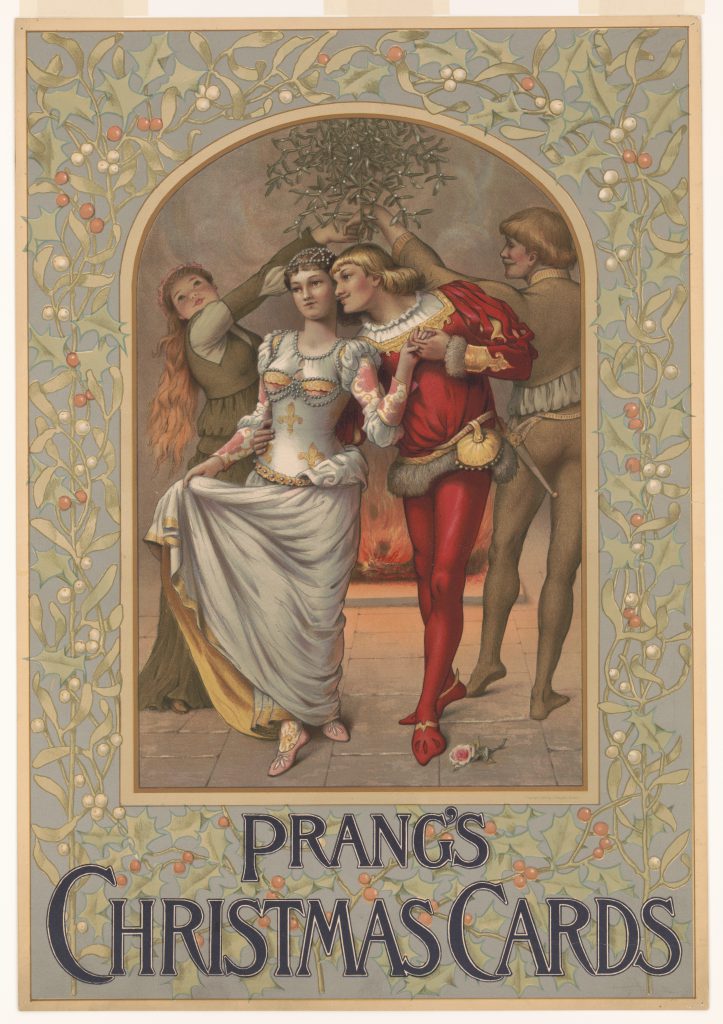Story NAVI NGUYEN
Photos INTERNET
Christmas cards are the year’s best-selling greeting cards. In the United States alone, over 2 billion cards, featuring more than 3,200 designs in 14 different languages, exchange hands during the holiday season.

The first Christmas cards
The precursor to Christmas cards is documented in a letter to King James I of England in 1611. It was a 33x24cm piece of paper that was decorated and folded, quite different from today’s ubiquitous cards. A rose was drawn in the center, accompanied by four poems and a song, along with Christmas and New Year wishes written for the royal family. In the 19th century, the first formal Christmas card was commissioned by Victoria & Albert Museum director Henry Cole, from artist John Callcott Horsley. As Cole was overwhelmed with letter-writing demands, ordering a small card with illustrations helped him fulfill his holiday obligations. The card featured a triptych design: the center depicted a family feast, while the two side panels showed underprivileged children being fed and clothed.
Victorian aesthetics of the 19th century contributed to creating many symbols still associated with Christmas today: robins and redbreasts, holly, ivy, churches and snowy landscapes. Also featured were familiar indoor ceremonial scenes such as gift-giving, tree decorating, Christmas feasts and Saint Nicholas. However, due to lithographic printing and hand- coloring by professionals, card production costs were expensive. In fact, in 2001, one of Horsley’s original 12 printed cards sold for a record price of 22,500 British pounds. Besides paper, there was a period when lace fabric was used to make cards.

In America, artist Louis Prang created the first Christmas card featuring a still life with roses. Americans didn’t initially favor British cards due to their high prices, and it took 30 years before they truly became interested. Prang’s designs were highly regarded for using up to 20 colors on a single card. Starting in 1880, he sponsored Christmas card design competitions; the first champion was artist Rosina Emmet, who later became a designer for Tiffany & Co. in New York. Despite different cultures and design styles, the Christmas card competition between European countries and America was intense in the early 20th century. The massive import of cheap Christmas cards from Germany in the late 1880s led to Prang’s company bankruptcy. After World War I, Hall Brothers (now Hallmark) developed new designs for Christmas cards, sized 4×6cm and foldable to fit in an envelope.
A creative crisis erupted during the 1930s-1950s. To stand out, Hallmark hired renowned artists like Salvador Dalí, Grandma Moses and Norman Rockwell. However, the brand’s most popular Christmas card of all time was incredibly simple. First published in 1977, the card featuring three guardian angels sold a record-breaking 34 million copies.

Christmas stamps
he oldest known Christmas stamp was issued in 1898 in Canada, featuring Queen Victoria’s crown and a map of British Empire countries and colonies highlighted in red. In 1939-1940, Brazil also issued four stamps to raise funds for charitable organizations. The design featured the three wise men and the Star of Bethlehem.
America’s first Christmas stamp directly expressed the power of the holiday with just a wreath, two candles and the text “Christmas, 1962.” The U.S. Postal Service initially released 350 million of the 4-cent stamps but had to print over 1 billion by year’s end due to surging demand. Since then, other holiday celebrations have been honored by the U.S. Postal Service, such as Hanukkah and Eid Mubarak.
Among so many choices, however, a card you design yourself and send to loved ones may still be the most meaningful of all.
From all of us at Heritage Fashion, we wish you a Merry Christmas!










